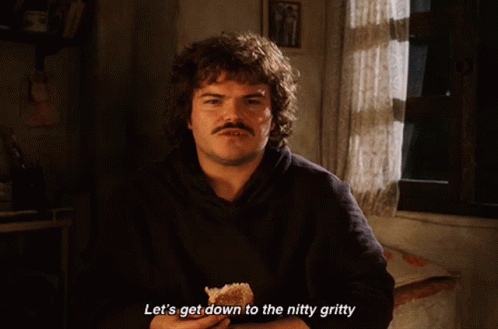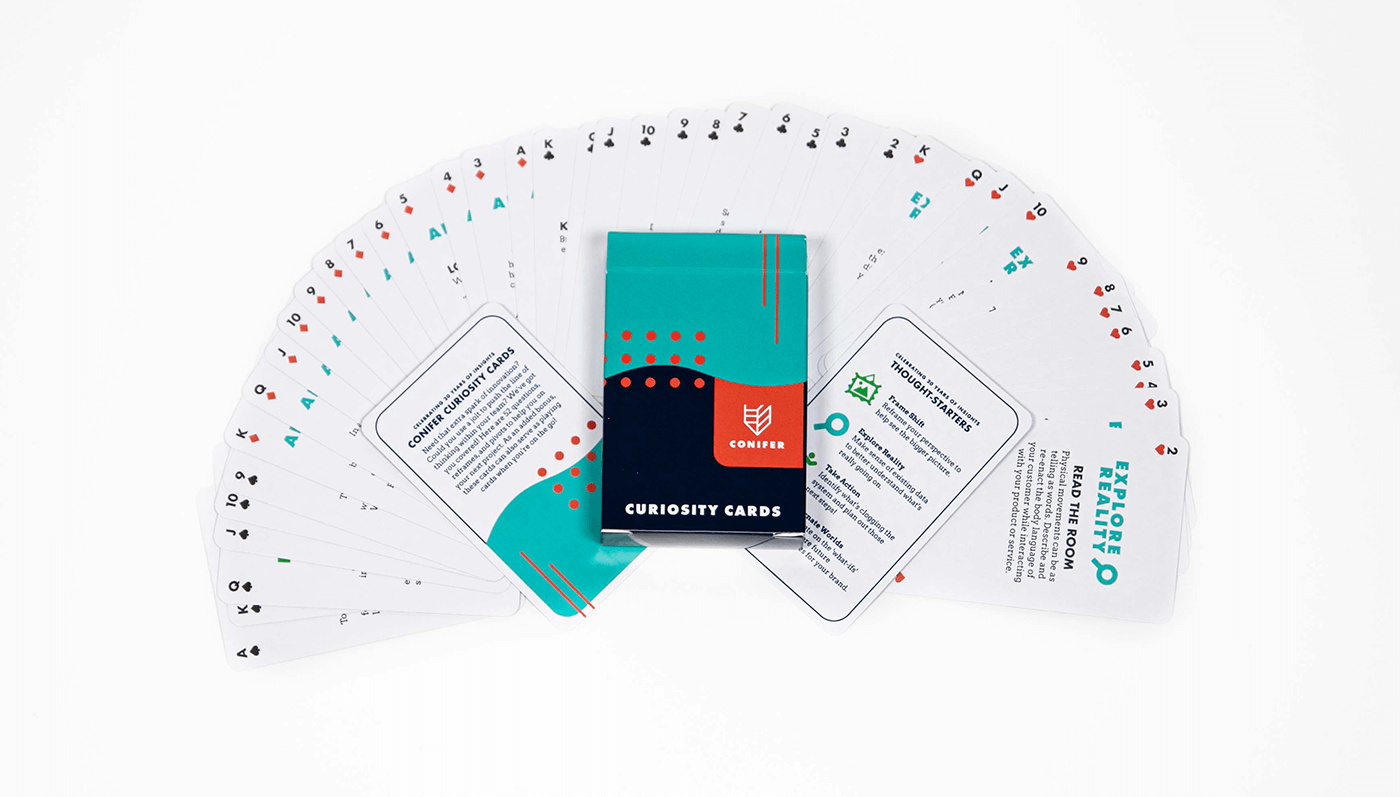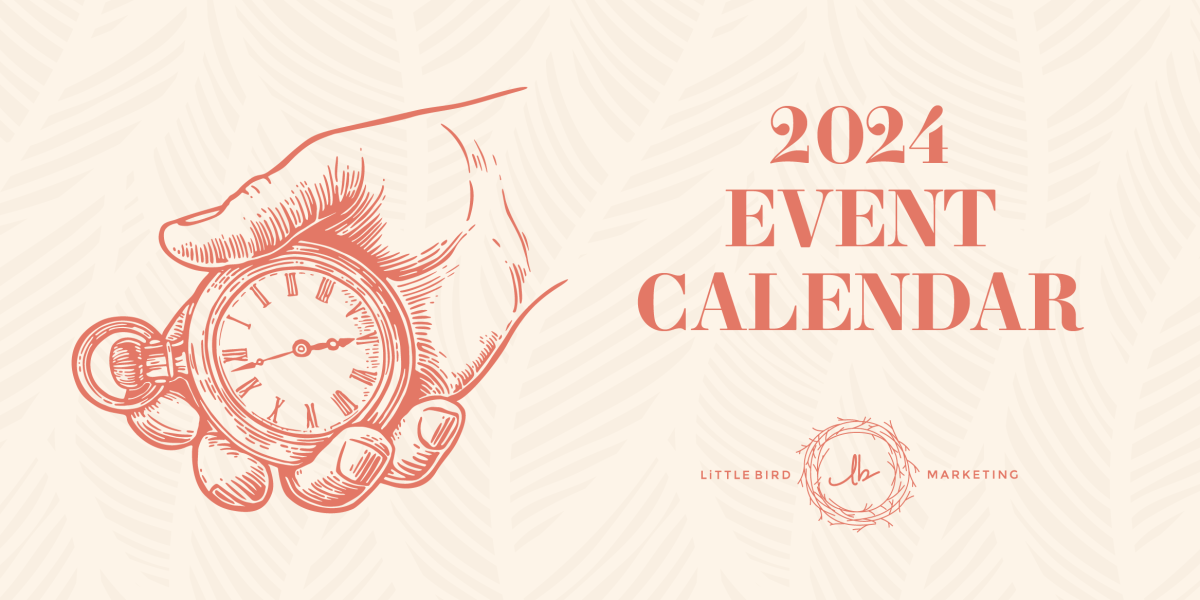Crafting an Effective Conference Strategy
Conferences are critical opportunities to increase brand awareness, create meaningful connections and generate leads. A well-planned conference strategy is essential to ensure you get the return on investment. But before we get to the Nacho Libre “nitty-gritty” about executing conference strategy, the first strategic move is to decide what the right conference is to attend!
It can be difficult sorting through all the opportunities available. And yes, the FOMO on the latest and greatest conferences is a real struggle. If only there were a way to go through the upcoming conferences you want to attend all in one place… Introducing our Airtable Event Calendar! We created this invaluable resource to make it easy for you to sort possible conferences based on your ideal audience, location and/or industry. Play around a bit with this interactive conference calendar.
EVENT CALENDAR
Hint: Bookmark this page for easy reference in the future! We’ll update it regularly and welcome your suggestions for inclusion to info@littlebirdmarketing.com.

Once you have decided on the right conference to attend, there is still so much to do. We think about crafting a winning conference strategy in three phases: pre-conference planning, actions to take during the conference and post-conference follow-up. As a general guide, we think of three weeks up and three weeks down, with the conference sandwiched in the middle. On the front, the timing can be extended with activities like a teaser added to email footers, email signatures or a few scattered social media posts. On the backside, time can be extended with workflow automation, demo follow-ups, personal meet-ups and more. Start with a general breakdown of the basics for each of these phases. This should give you the needed headspace for adding creative actions to make your outreach more focused and customized.
Pre-Conference Planning
There’s a big difference in experience between attending a conference, exhibiting there and/or speaking. When starting to plan, get clear on the goals regardless of how your team is showing up.
- Set an internal kick-off meeting to align on marketing and sales goals.
Questions to Ask:
Are you attending, hoping to make connections?
Are you showcasing with a goal to talk to x amount of prospects?
Are you speaking to build thought leadership and brand awareness?
How is your booth designed to be relevant to your ideal client persona and the pain points they are experiencing?
Know your goals going in and write them down. Even if the goals are not reached, they provide important data to set the stage for future success.
- Research the conference agenda, speakers, and attendees.
- Questions to Ask:
- Which key prospects can be identified and contacted to schedule a meeting in advance?
- What “customer love” strategy can be implemented for attending clients?
- What speaking sessions should not be missed for team growth?
- What speaking session should not be missed to post about and tag the speaker?
Teams benefit from a divide-and-conquer strategy when attending a conference. Agendas should be highlighted, complete with a list of the speakers, to prepare you in advance for the social posting necessary when you’re sitting in a session. Also, don’t be afraid to print out a list of your top 10 or 20 people on a “must meet” list. Don’t be shy about it – you’re there to meet them! Carry it with you and even add their photo from LinkedIn to help you identify them. If they see it, what better form of flattery is there that they were so important to you that you planned to meet them?
- Buy engaging promotional items that elevate your brand status.
Questions to Ask:
- Is there a conference theme that can be integrated?
- What giveaway would drive people to your booth?
- Could a giveaway item be connected to your session attendance?
People don’t want another water bottle. They also don’t want to carry around useless junk they will leave in their hotel room because it doesn’t cut the muster when it is time to pack. Think “less tchotchke, more swag.” This is your chance to elevate your brand reputation and leave a lasting impression. If you’re still thinking about that branded jar opener, just know you’d be better off buying nothing than lowering your brand standard.

- Design an eye-catching booth with personal interaction in mind.
Questions to Ask:
- Based on the location, where will the foot traffic be coming from?
- What visual will draw people in to stop and have a conversation?
- What physical obstacle can be created to direct traffic to the booth?
- Are the giveaways obviously being given away?
Interactive elements and giveaways can attract foot traffic and encourage conversations. The high cost of a booth demands it works to generate conversations, interactions and ultimately, generate leads. But bringing two chairs where you will sit all day and not be at eye-level with passers-by makes no sense.
- Connect proactively to expand your network.
- Send a personalized LinkedIn message to speakers and sponsors, letting them know you are attending and would love to connect. The keyword here is personal, but that doesn’t mean it needs to be unique. For everyone speaking, the post can be as follows, “I see you’re speaking at XYZ conference, and I’m looking forward to listening and learning. Happy to connect here in advance and make the most of the event!”
- Likewise, if you see a sponsor, you may reach out to the top management of that company (yes, all of them) with a message as follows, “I see your company is sponsoring XYZ conference. I’d love to connect here in advance and make the most of this connection even beyond the event.”
- Walking away from this opportunity to expand your online network is a big mistake. Even if a speaker backs out last minute, or you contact part of the team who is not attending, you make connections for legitimate business reasons, and your content at the event is now relevant to this new group of followers.
Schedule a post-conference debrief meeting. Decide who will need to attend and create an agenda before the conference. This sets the expectations of what people will be held accountable for and provides one focused meeting to discuss wins and losses. Be sure to have a time on the agenda for each person who attended to speak so the expectation is set for everyone to contribute to learning, no matter the outcome.
Feeling like the nitty is already a bit too gritty and you want some help?
Let’s figure it out together!
During the Conference
- Engage actively.
- Attend sessions, workshops, and keynotes that align with your objectives. Participate in Q&A sessions and engage in discussions. Remember: Anytime you talk, you are taking up valuable conference real estate and gaining exposure so whether you talk in a session or simply post online about something you heard in a session, you are learning and being seen at the same time.
- Network, network, network.
- Introduce yourself to other attendees, speakers, and exhibitors. Exchange contact information and take notes on important conversations you want to follow up on after the conference. Have one central place where you can write down notes from the day before you go to sleep. You will not remember the name of the person you met on day one when you are on the plane after day four. LinkedIn is a great tool to get someone’s information and be connected to build a lasting relationship but makes it easy for people to connect easily by using LinkedIn’s embedded QR code feature.

- Collect leads.
- Remember that you don’t sell to your network, you sell through your network. This is an important mindset as you network. Set up a system to gather contact information from potential leads simply by asking those you meet how you can help them and also be clear about how they can help you. You can even share your “target list” for the conference. Perhaps they are a close connection with someone on your list and can make the introduction in person and much more personal.
- Take notes.
- Inspiration hits at the strangest times. Jot down key takeaways from each session or conversation. Note actionable insights and ideas to implement post-conference. Try to be as specific as possible about key learnings and who at the company would benefit the most from sharing in the post-conference debrief meeting.
- Post live social media updates.
- Share real-time updates, photos, and insights on your social media platforms. Engage with conference-related posts from others. Use event hashtags to comment on other attendees’ posts. Be a part of the conversation both in person and online. Having a drink with a new acquaintance? Share a photo. Enjoyed a sponsor’s booth? Share a shout-out and be sure to tag their company name. Heard a mic drop moment in a session? Share the quote, and be sure to attribute it to them by tagging them personally.
- Attend networking events.
- A lot of the magic happens outside the conference. You want to be at the pre-event dinners and the after-hours happy hours. Decide how your team can divide and conquer here so you don’t miss out on any opportunities. When you do attend, be sure to mingle and maximize the time to get to know new contacts. Too often, teams stick together and become a roving gang. This lowers the approachability. Instead, break the schedule up intentionally and plan on not sitting together, eating together, or hiding in a corner together during cocktail hour. Need some audible inspiration? Listen to this podcast of Priscilla’s Top 3 Tips for Conference Season Success.
Post-Conference Rodeo
- Turn your takeaways into content.
- You don’t have to be Hemingway to write a great summary of your experience. If you’re not the writer for the company blog consider using LinkedIn articles to post your thoughts and key learnings from the experience. Use bullet points to save time. Post on your LinkedIn feed and tag people you met along the way, as well as colleagues and co-workers, to increase your reach. For a company, creating content that is relevant and timely can ramp up interactions and drive leads to your website. For a professional, it establishes your personal brand as helpful and gives you a reason to keep the connections going (see our next point).
- Keep the connections going.
- The end of the conference is just the beginning. Sending personalized follow-up emails to your leads referencing your interactions during the event is nothing new. Granted, most people don’t do it, but when you do make sure you provide something of value and give them a reason to continue the conversation you started at the conference. This is why a short round-up article is better done first and follow-up second.
- Update your CRM.
- Did you receive an attendee list for speaking or sponsoring? Make sure you get those new contacts into your CRM so you can nurture new leads to potential customers. Be sure to use some kind of custom property to tag them as a connection from this particular event. As a Platinum HubSpot shop, we like to upload a CSV file so it will not only import new contacts but update a contact property we have set called “Events”. Using a drop-down menu for multiple options is important as your system needs to handle people you meet again and again at different venues. Also, pay attention to labeling the event with the year. For example, we attend Greenbook’s IIeX each year, so making a note of which location and year is important for personalized follow-up and contact details. Here’s how to customize your contact properties in HubSpot.
Measure, rinse and repeat.
Now is the time to measure your ROI. What went right, and what needs to improve for next time? Time to attend that debrief meeting, take notes and use that data to inform your next decision about conference attendance. Depending on the length of your sales cycle, you may need to schedule a follow-up debrief months later. The first meeting helps you learn from the experience and the second will give you a better picture of the true ROI.
When done right, in-person events are one of the highest-converting lead-generation tactics in your arsenal. Thinking about the event in these three phases helps to break down the activity required to get the most return on your investment.
Need help getting the most out of your next event? Get in touch!

